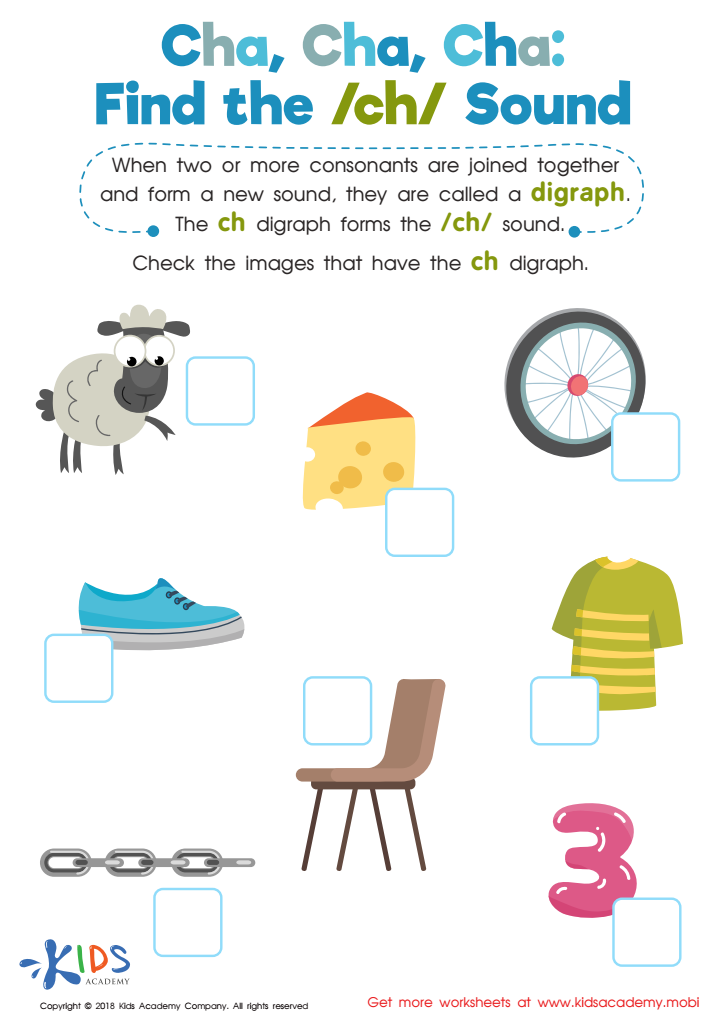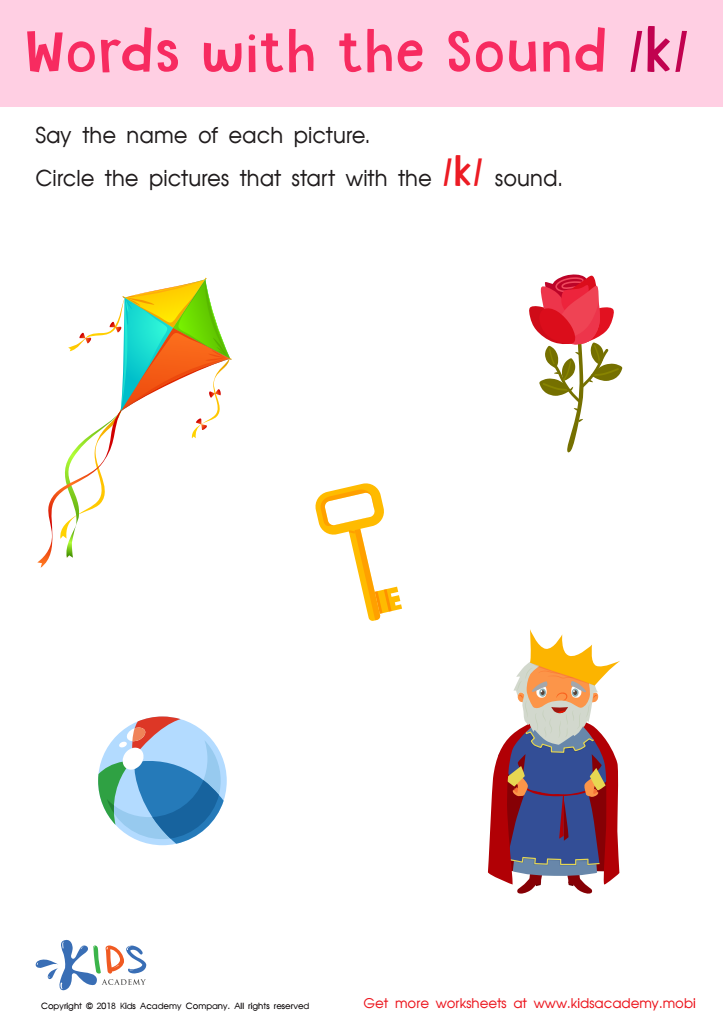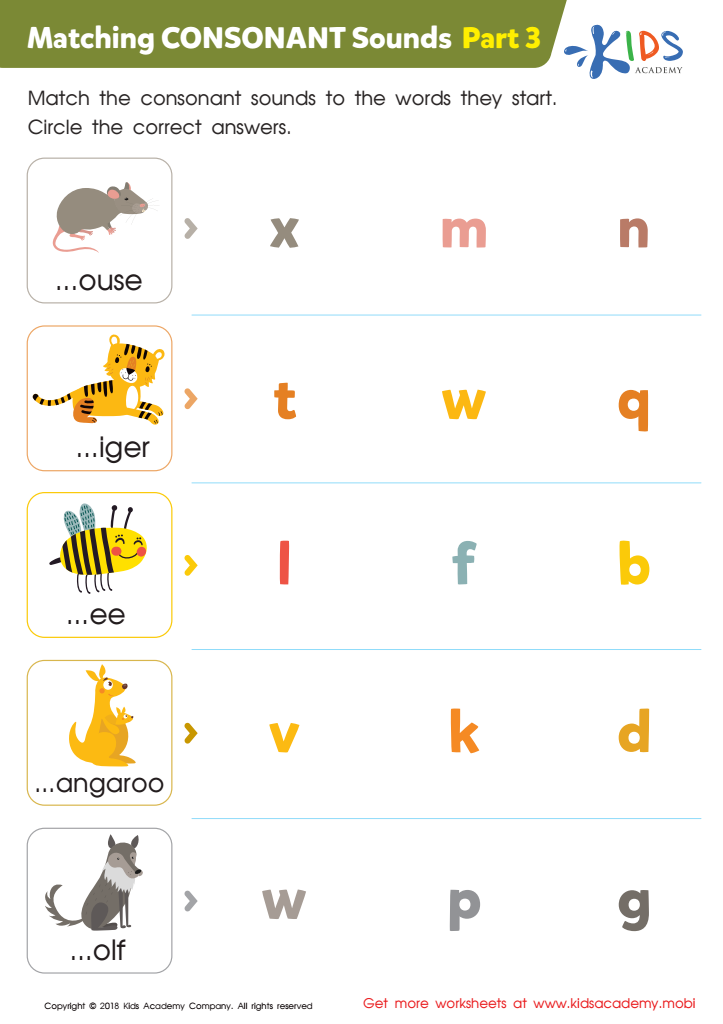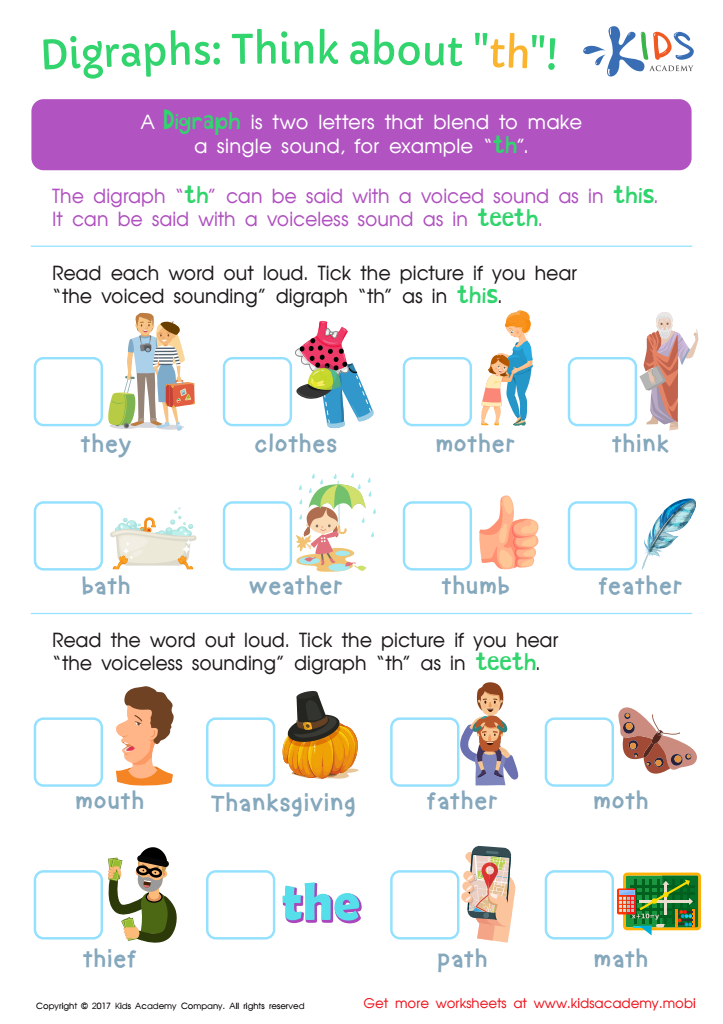Normal Consonants Worksheets for Ages 6-8
26 filtered results
-
From - To
Discover a fun and engaging way for children ages 6-8 to learn about normal consonants with our printable worksheets! Designed to enhance phonics skills and vocabulary, these worksheets feature a variety of activities such as letter tracing, matching exercises, and fill-in-the-blank tasks. Ideal for classroom or home use, they provide a hands-on approach to mastering consonant sounds. Tailored to support early literacy development, our worksheets are perfect for young learners looking to boost their reading readiness. Explore the resources that will make learning consonants enjoyable and effective, laying the foundation for future literacy success! Print and start learning today!


Find The Missing Word Worksheet


Where Is the Digraph? Worksheet


The /wh/ Sound Worksheet


Cha, Cha, Cha: Find the /Ch/ Sound Worksheet


Shhh... What Digraph? Worksheet


The SH Digraph Worksheet


Missing Digraph: Part 2 Worksheet


The /th/ Sound Worksheet


Circle the Consonants Worksheet


Words with Sound M Reading Worksheet


Words with sound k Reading Worksheet


Words with sound h Reading Worksheet


Words with sound p Reading Worksheet


Words with sound f Reading Worksheet


Review the Blends Worksheet


Twin Onset Worksheet


Vowel and Consonant Sounds: Assessment Worksheet


Matching Consonant Sounds: Part 3 Worksheet


Matching Consonant Sounds: Part 2 Worksheet


Matching Consonant Sounds: Part 1 Worksheet


Let's Look for Blends Worksheet


Double Consonant Spelling Worksheet


Digraphs: Think About "th" Worksheet


Consonant Blends: "Dr" and "Tr" Printable
Normal consonants are crucial for children aged 6-8, as they form the building blocks of language and literacy development. At this age, students are transitioning from early reading skills to more fluent reading and writing. Understanding normal consonants enhances their phonemic awareness, which is essential for decoding words.
Parents and teachers should prioritize consonant knowledge because it directly impacts a child’s ability to read and spell. Mastery of consonant sounds allows children to break down words into manageable parts, making it easier for them to recognize and produce new vocabulary. Engaging with normal consonants also fosters confidence in communication, as children begin to express themselves through writing with greater accuracy.
Furthermore, incorporating activities that focus on consonants, such as phonics games or storytelling, can make learning enjoyable and interactive. This engagement not only strengthens their grasp of language but also promotes a love for reading—a vital habit for lifelong learning.
In summary, emphasizing normal consonants in early education enriches children's literacy skills, supports their academic growth, and lays a strong foundation for future learning, making it essential for parents and teachers to focus on this aspect of language development.

 Assign to My Students
Assign to My Students










